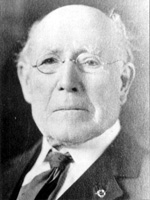As the recent Southern California wildfires have reminded us, one needs to be prepared for the unexpected, particularly as population density, urbanization and other factors continue to impact the environment around us.
To that end, researchers at California State University, Northridge are working across disciplines to use machine learning to train a new generation of students in how to use existing data to prepare for potential disasters such as wildfires.
“In no way is CSUN the only institution that is doing this work, but we all feel that this training is important and truly impacts the community,” said environmental geographer Mario Giraldo. “By working together, we are giving undergraduate students tools that will make them desirable employees in a variety of fields, whether it’s for insurance agencies, developers, urban planners or governmental agencies. They are learning, using real data, how to identify indicators that can predict where a wildfire may happen, and what may happen when it starts. This is information that the recent wildfires have shown is vital.”
Giraldo is working with computer scientists Xunfei Jiang and Li Liu to train students to implement tools that, using data collected from the United States Geological Survey (USGS), NASA, National Centers for Environmental Information, and the California Department of Forestry and Fire Protection (known as Cal Fire), can identify what factors are key in the prediction for risks of wildfires.
The project, funded through a National Science Foundation Research Experience for Undergraduates (REU) grant, is led by Jiang and Liu and invites undergraduate students from across the country to apply to take part in the research and spend their summers training in using information from public datasets and machine learning models to address environmental challenges such as wildfires.
“What we want to do is collect and clean remote sensing data and other specific data so that the ability to predict wildfires is more and more reliable,” said Jiang, adding that the research is posted on a publicly-available website that includes 2D and 3D color scale data visualizations.
In one of the projects, students collected seven different data sets about fire incident records between 2013 and 2023, including vegetation, climate, topography, elevation, settlements and previous fires.
“Using those data sets, students applied data science key technologies and data management processes to assemble a large dataset,” Jiang said. “Students develop their skills in data science, because data sets collected by different institutes that have different types of files usually have various spatial and temporal resolutions.”
Since the project launched in 2020, the researchers and undergraduates have implemented machine-learning models that predicted wildfire potential on a state-wide level, by county and based on ecological systems. Among the key factors that plays a role in predicting the potential for wildfires is vegetation, Giraldo said.
“One of the things the students found is that, of course, vegetation is a great indicator of when and when wildfires might start,” he said. “While everybody knows that, the students were very interested in actually learning the tools and techniques needed to assess vegetation distribution and ecosystem based variations.”
The ultimate goal of the overall project, Liu said, is to train the undergraduates on how to translate data into usable bits of knowledge that can then provide valuable information to community and governmental leaders in the areas that may be impacted. Some of the students participating in the project have been successful in securing spots in graduate programs and to continue their careers in STEM disciplines.
“We are providing the students with skills are only going to be more and more in demand,” he said. “Last month’s wildfires only serve as a reminder that the tools we currently have are not enough. And while we may never be able to stop wildfires from happening, perhaps, with better data, we can be better prepared to mitigate their destruction.”
Like this:
Like Loading...
Related





 Tweet This
Tweet This Facebook
Facebook Digg This
Digg This Bookmark
Bookmark Stumble
Stumble RSS
RSS
































REAL NAMES ONLY: All posters must use their real individual or business name. This applies equally to Twitter account holders who use a nickname.
0 Comments
You can be the first one to leave a comment.